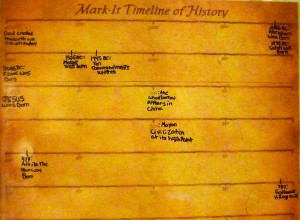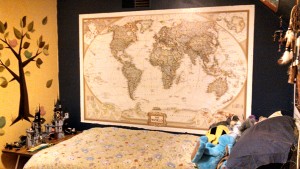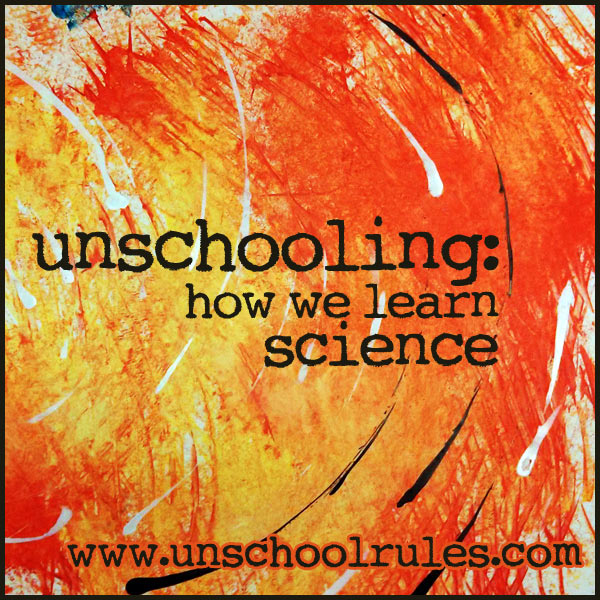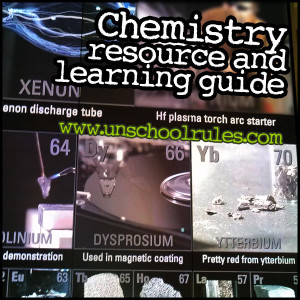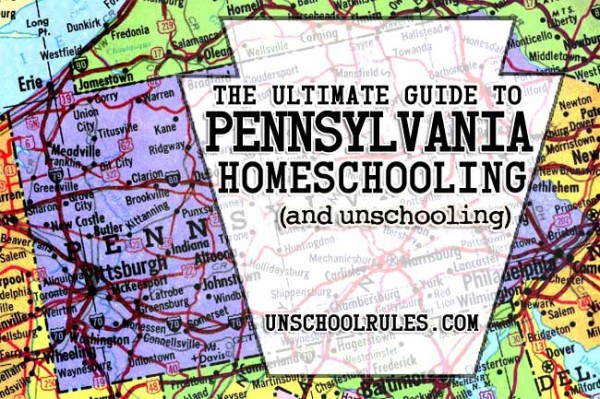
Every so often, this map (courtesy of the Home School Legal Defense Association) makes the rounds among homeschool bloggers.
It talks about the degree of regulation that each state puts on its homeschoolers, and our state, Pennsylvania, is always rated among the most heavily regulated.
If you live in Pennsylvania, it’s probably not a surprise. Even homeschoolers elsewhere have heard the horror stories that home learning here is restrictive, hard to do, highly regulated and so on.
Yet our family has homeschooled successfully in Pennsylvania for two generations (during my teen years, and now during Ashar’s) with little issue.
That’s why I’ve made the time over the past few weeks to compile what I hope will be the ultimate guide to homeschooling and unschooling in Pennsylvania – because it’s VERY doable when you know the law.
Here’s who this guide is for:
- Parents who want to homeschool in Pennsylvania but have heard it’s super-complicated.
- People who want to understand the different options for education in Pennsylvania, like cyberschooling, charter schools and more – and how they compare with homeschooling.
- Those already homeschooling in Pennsylvania who aren’t sure what the law really requires.
- Parents of homeschooled middle- and high-schoolers who are concerned about diplomas and transcripts.
- Unschooling or relaxed homeschooling families who aren’t sure how to produce the right documentation without a traditional curriculum.
- Pennsylvania families (homeschoolers AND otherwise!) who are looking for fun field trips around the state.
That’s a big list, right? Mostly, I encourage you to read through and see how we’re making homeschooling work in our home state – even if not all these areas apply to you.
I love living in Pennsylvania – and I hope I can shine a light on some of the resources that have helped us homeschool without a problem, and while having a great time!
As a full-disclosure disclaimer, I’ve got to be very clear: I’m not a lawyer, and my interpretations of the law aren’t to be taken as “legal advice” of any sort!
Pennsylvania homeschool laws: An overview
Note: This guide is up-to-date with the October 2014 changes to the Pennsylvania homeschool law to the best of my understanding. As I said above, I’m no lawyer, but this info is current as I understand it.
If I can impress nothing else on you, please know this: The best thing you can do in Pennsylvania is read the homeschool law yourself. Read it over and over. Read it some more. Next month, read it again. Do it again the month after that. It is a bunch of legalese, but it is understandable, and your absolute best safeguard in any situation is to truly know what is and isn’t required. I can’t tell you how much this has helped me personally!
You can read the law on the Pennsylvania Department of Education website here. You can also check out more info via the Home School Legal Defense Association site.
I also heartily recommend – and you’ll hear plenty about this throughout this guide – the amazing Ask Pauline website, which truly is an ultimate guide of ultimate guides to Pennsylvania homeschooling.
Specifically, Pauline’s Guide to Pennsylvania Law is a great walkthrough of what you need to know. I encourage you to read through this guide, then come back, click that link, and read through it and all the links contained in it; if you do that, you will know more about the PA law than most school district administrators!
We’ll come back to the specific documentation requirements for homeschoolers in Pennsylvania in a little bit, but the bottom line is this: If you have a high-school diploma or the equivalent, and if no adult living in your home and/or having custody of your child has a felony conviction, you are legally qualified to homeschool in Pennsylvania.
Cyberschooling, private tutoring and cover-schooling in Pennsylvania
Before we start talking about what homeschooling requires, let’s talk about some things that aren’t homeschooling, at least in a legal sense, in Pennsylvania.
One of the biggest things “mistaken for homeschooling,” as it were, is the cyber charter school program. You might be familiar with programs such as Commonwealth Charter Academy, PA Cyber, Agora, PA Distance Learning, PA Leadership Charter School, PA Virtual Charter School, 21st Century Cyber Charter School and more. We have friends in many of these programs, and while the material and approach vary slightly between them, they all have much in common.
Under Pennsylvania law, cyber charter schools are the legal equivalent of public schools. That means that your children, if enrolled in a cyber charter, are subject to all state public-school testing (such as the PSSA tests and Keystone exams), and will have their curriculum chosen for them based on the state’s prescribed standards.
Maybe that’s OK; in our family’s case, we are not in agreement with some of Pennsylvania’s procedures, including the pending move to Common Core, and we did not want to use a program of learning-at-home that applied the public-school standards and selections.
The tradeoff is, if that works for you (for instance, if everything about public school was fine for your child, but they need the ability to work from home instead of at school), there is no paperwork or documentation requirement on the parents of cyberschoolers. Again, it’s just like sending your child to public school.
Private tutoring is another piece of the Pennsylvania education-at-home system that is often misunderstood. It is homeschooling (and, in fact, falls under “Act 169,” or the Pennsylvania Homeschool Law of 1988) but it is more specific: It is homeschooling done by someone with a Pennsylvania teaching certificate, who only teaches members of one family, and who receives payment or other consideration for their service.
This is a great option because it has the potential to require significantly less paperwork and regulatory oversight for the homeschooling family, but it is often misunderstood (even by various “experts” across the state!) I highly recommend the Ask Pauline page on private tutoring for details on this option if you or someone you know is a certified teacher in Pennsylvania.
Our only personal experience with this option comes from friends of Ashar’s are homeschooled by their grandmother under the private tutor code in our district, and it has worked out quite well for them! As with other options, this is a case where being informed will make all the difference.
An option that is prevalent in many other states but not, really, in Pennsylvania is that of a cover school or umbrella school. In this system, your child is enrolled as a student in a “private school” recognized by the state, but that school’s students are all studying independently at home under the guidance of their parents. Then, rather than reporting to the local public school district as traditional homeschoolers would, these families “report” to the cover school.
Cover schools are not addressed in Pennsylvania’s homeschooling law. This is important to note, because some of them exist – but how your district treats them is up for debate! I highly recommend reading up on these via Ask Pauline’s cover school page, and I’ll echo her key advice: Most people who use what in other states would be considered a “cover” school still do and should file PA homeschooling paperwork and documentation as if they were homeschooling without it.
So we keep talking about these other things that aren’t what you’re probably here to hear about: Standard homeschooling in Pennsylvania. So how does that work? That’s what we’ll talk about next!
Required documentation in Pennsylvania: Overview
The are, essentially, either 5 or 6 paperwork items that you are required to have as a Pennsylvania homeschooler. Two (or three, depending on your situation) come at the beginning of the year (or the beginning of the homeschool program if you’re withdrawing your student mid-year) and three come at the end of the year.
The October 2014 changes to the law make drastic changes to which of these items need to be submitted to your school district superintendent at the end of the year, but not to the start-of-year documentation.
At the start of the year, you must provide to your district:
- A notarized affidavit.
- A list of objectives for each child in the homeschool program.
- If your child has been identified by the school district as a child with a disability and has an IEP in place, your objectives for that student must have a pre-approval by a qualified party, and that preapproval becomes the third item required just in those cases.
Get sample copies of some of our family’s documentation
· More than a dozen samples of portfolio sections over five years, done from a radical unschooling style
· Sample secondary objectives (editable)
· Sample official homeschool transcript (editable)
· Sample letter revoking consent for IEP (editable)
All are free for Unschool RULES email subscribers. Get your copies here.
At the end of the year, you must meet with an evaluator (more on this later) and share with them a portfolio including:
- A log, by date, showing materials read (commonly called the book log).
- Proof of attendance showing the appropriate number of days and hours completed.
- Samples of work from a variety of areas.
- Only if your child is considered to be in 3rd, 5th or 8th grade, the results of an accepted standardized test.
After meeting with your evaluator, you will receive a certification letter from that person confirming that your student has made continuing progress.
That, and only that, must be submitted to your school district’s superintendent by June 30 of each year.
Let’s go into each of these items in detail.
The notarized affidavit for Pennsylvania homeschoolers
Believe it or not, this is the simple part. You just need to swear in writing, and have it notarized, that you meet certain stipulations:
- That instruction will be given in English
- That the person supervising the home-education program is the student’s parent or legal guardian
- That said parent or legal guardian has a high school diploma or equivalent
- That the student has received any immunizations required by law (or that the student has a religious or medical exemption to the same)
- That the student has received any other health and medical services required by law
- That no adult living in the home or any person having legal custody of the student has been convicted of particular crimes within the past 5 years
- And that the home-education program will comply with the state’s provisions
In all these cases, your statement in the affidavit is enough. You should never need to submit a copy of your high school diploma, a vaccination record, a criminal clearance or any other “supporting documentation.”
There are districts that will ask for these things. Normally, a polite, “Actually, the statement in the affidavit is considered fully sufficient under the law” will end the issue; I have to use this each year when I don’t provide a copy of my daughter’s medical records.
You can find many sample affidavits online. There are many details and sample forms available on Ask Pauline here, and I offer a sample of the one our family uses as a gift to our email subscribers. If you’re a subscriber, check the link in the bottom of any email I send, and if not, feel free to use one of the links in this post to join!
Objectives and special-education preapproval
Wow, I hear a lot of people stress out about the objectives that they’re required to file with their school district at the beginning of the year.
“Do I have to list out all the curriculum I plan to use?”
“What if I don’t plan to use standard curriculum?”
“What if we don’t do all the things we say we’re going to do?”
The answers to these are NOPE, DOESN’T MATTER and ALSO DOESN’T MATTER!!
Ask Pauline offers a huge list of sample objectives here. These have been submitted by real Pennsylvania homeschoolers, using a variety of styles, across a variety of ages and grade levels.
Here’s a hint: These can be broad! For example, here are the science objectives I submitted this year.
SCIENCE
- Student will increase his scientific knowledge through experimentation, observation, museum visits, classes and reading.
- Student will continue to pursue focused advanced scientific study in areas of interest, including zoology and chemistry.
That’s it. It’s also likely what I’ll submit next year, and the year after that… which is the great thing. The phrase “appropriate for his age, interest and ability level” appears multiple times in our objectives – because it means that we’ll do the same type of thing, with changes as Ashar becomes more skilled.
Don’t stress too much about these. Resist the urge to over-specify. The law clearly states that “The required outline of proposed education objectives shall not be utilized by the superintendent in determining if the home education program is out of compliance.”
There is one particular case in which you have one extra step to do here. If your child has been officially identified by your district as a child with a disability – which, essentially, means if you were a former public-schooler with an IEP in place, as we were – your objectives need to be pre-approved by a person meeting particular criteria before they’re submitted to the district.
To pre-approve objectives for a student with a disability under this law, you must be:
- A teacher with a valid certificate from the Commonwealth of Pennsylvania to teach special education, or…
- A licensed clinical or certified school psychologist
This person does not need to be a current special-education teacher, nor does this person have to be your evaluator. We used Ashar’s psychologist to pre-approve when we first decided to remove him from public school, then his evaluator, and now a local psychologist who is also a homeschool mom.
There is generally not a “form” for preapprovals, but the professional should sign the objectives as well as print their full name and any relevant ID number or certification information.
This isn’t a huge deal, usually, once you find someone to do it regularly. The alternative is to terminate your child’s IEP, a process we’re actually sorting out now, but that comes with both pros and cons. (You can read more about that option at Ask Pauline and the Pennsylvania Department of Education.)
The book log requirement for Pennsylvania homeschoolers
One part of the portfolio required each year for Pennsylvania homeschoolers is what many of us call the “book log.”
Specifically, the state law requires the portfolio to include “a log, made contemporaneously with the instruction, which designates by title the reading materials used.”
There’s a lot of debate and interpretation wiggle room in that statement, and I can’t begin to do it justice, but (as is the case for so much of this Pennsylvania homeschooling stuff), Pauline of Ask Pauline has an amazing resource on logs here.
I can tell you that we log our books read with the date, generally as we go, using this book log form. (Yep, that’s from Ask Pauline too; in fact, there are a bunch of varieties of log forms available here!)
In sixth and seventh grades, we literally only included books. Moving forward, I might begin including relevant movies, video games, TV shows and more, to help as we create a high-school transcript for Sarah. I’m not sure yet; I am definitely not a fan of providing more than the law requires!
Standardized testing requirements for Pennsylvania homeschoolers
The last thing I mentioned in end-of-year requirements states that you must include in your portfolio, “in grades three, five and eight results of nationally normed standardized achievement tests in reading/language arts and mathematics or the results of Statewide tests administered in these grade levels” if you’re homeschooling but NOT operating under the private tutor law.
Don’t get too freaked out about this. It does not mean that your child needs to take the PSSA or the Keystone Exams (the public-school assessments given in our state). It does not mean that if your child scores “poorly” that they will “fail” or anything of the sort. In fact, at worst, your evaluator may ask supplemental information.
When you turn in your evaluator’s approval, it would be rare, but if your district were to feel that you were not making adequate progress in your family’s education, officials there could ask for supplemental information, or request a hearing, but that is incredibly uncommon.
The most I’ve heard done regularly is that some parents will include a brief note if their child scores below their overall skill level with some explanation. That is certainly not required and may, in fact, draw more attention to the scores than is merited!
The evaluator is tasked with looking for “progress.” That means that test scores, while part of what you’ll submit a few times, are not by themselves a make-or-break.
You also have your choice of several tests. According to the State Department of Education’s circular (read more here), you can choose:
- California Achievement Test
- Comprehensive Testing Program (CTPIV)
- Iowa Test of Basic Skills
- Metropolitan Achievement Test
- Peabody Achievement Individual Test – Revised Version
- Stanford Achievement Test
- Terra Nova
- Woodcock Johnson Revised Tests of Achievement III
- Wechsler Individual Achievement Test III (WIAT-III)
- … or the PSSAs
There are differences between each that make research important. In our family, we only had one year of required testing (eighth grade) as homeschoolers, since we pulled Ashar out of public school midway through sixth grade. Ashar completed the CAT, or the California Achievement Test, which we chose because it can be administered in the home either online or on paper as long as it’s proctored by an adult who is not the supervisor of the home-education program.
We had actually considered, briefly, having Ashar take the PSSA, which I hate, but which he knows “how to take” because of his public-school indoctrination. In the end, we left the choice up to him, and I admit I’m glad he chose the CAT!
Some tests will require a specific type of person to administer. As always, the Ask Pauline website is a great resource here, with pros and cons of various tests listed on the testing page, as well as a ton of other great information, including details on testing levels (for instance, if I wanted, I would NOT have to give Ashar the eighth-grade CAT!) and how to actually get tests to administer.
Above all, I encourage you not to stress about this. One of the biggest downfalls of Ashar’s public-school career was the district’s need to teach to the PSSA. I am so glad that we have the freedom in homeschooling not to do that; why would I worry about something that will take us less than 3 hours?
Pennsylvania homeschooling portfolio requirements
So you’ve got your book log. You’ve got your standardized test results if your student was in third, fifth or eighth grade. Soon, you’ll head to your evaluator meeting (and we’ll talk more about that soon).
Meanwhile, there’s one final portfolio requirement. It says you should include “samples of any writings, worksheets, workbooks or creative materials used or developed by the student.”
If I can impress nothing else on you, let me say this: Don’t go crazy on samples. Seriously. You do not need to include the end-of-chapter test from every textbook you use. You don’t even need to include any “graded” material, and we’ll talk more about that when we talk specifically about unschooling in Pennsylvania.
Your evaluator may have a specific number of samples they prefer. We’ll talk more about that in a minute, but please know that you have a lot of leeway in what a “sample” might be. In our family, we don’t do worksheets or textbooks. Many of our samples are photos from trips, blog posts, etc.
Some evaluators will only want to see your log, an attendance statement, test scores (if applicable) and one or two samples. Others expect to see a large number of work samples as part of the documentation they receive. Once again, Ask Pauline offers an amazing portfolio walkthrough.
One final note about portfolios: Somewhere in what you submit to your evaluator, you need to verify that you’ve met the state’s attendance requirements – either 180 days of education or an appropriate number of hours (900 for elementary students, 990 for secondary students).
Some people use a log to track this – for instance, I use this ultra-simple calendar; I bet you can’t guess where it’s from, can you?
Meanwhile, other people believe that a statement in your portfolio (usually in a cover letter) attesting that you’ve met your required number of days or hours can and does suffice. A lot of this is also evaluator-dependent; in our case, it’s no extra work to keep my super-simple calendar, and it helps me have an idea of where we “are” in terms of our documentation for the year.
Working with your evaluator and your school district in Pennsylvania
Finding an evaluator who’s a good fit for your family is the single biggest job you have as a Pennsylvania homeschooling parent.
In fact, we “evaluator-shopped” last year and chose a new evaluator because our previous one, while very nice, was not someone Ashar was comfortable with.
In our family’s case, a lot of our portfolio documentation comes in the form of photos and travel brochures, and during the evaluation, the evaluator will often want to hear from the student about what they learned, especially at the secondary level. Well, when Ashar is not comfortable, he… Just. Doesn’t. Talk. (Uhoh.) WAY too stressful.
Our new evaluator works in a style much more comfortable to Ashar (most of the questions are done in writing, with the interview part very informal). She also asks for a much smaller number of samples that’s way more in keeping with how I read the law. (Our previous evaluator wanted 10 samples in every “subject,” much more than the state law requires.)
For more on choosing an evaluator who’s a good fit, of course I recommend the Ask Pauline guide.
A few notes about finding an evaluator, just based on my experience:
- Find an evaluator that is comfortable evaluating for your style and your family’s needs.
- If you need to have objectives pre-approved for special education, while that CAN be done by some evaluators, it does not have to be done at the same time.
- Understand the criteria for evaluating; many families have an educator friend who qualifies and who could provide the evaluation if willing. The law extends beyond current working teachers to any teachers with valid credentialing – retirees, for instance, qualify.
- While people who are not teachers can evaluate under the “other qualifications” provision, the school district does reserve final say in accepting those evaluations, and you need to get them OK’d ahead of time. There was an evaluator WELL-known in my area (a longtime homeschool mom and consummate professional) and I believe every school district in my county accepted her – except mine. So double-check first!
- A clinical or school psychologist is another option for evaluations, one not often explored. If your child meets with one regularly, consider whether that might work!
Graduation requirements for Pennsylvania homeschoolers
Let me be super-clear about one thing up front: You do not need to use a “diploma program” to graduate your child from a homeschool program in Pennsylvania. While such programs exist, the law is clear – and, I believe, helpful – in that it lists out some basic requirements, and if your child meets them, they are a high-school graduate. It’s that simple.
And, with the October 2014 changes to the law, the diploma you issue as a parent, signed by your child’s 12th-grade evaluator, holds exactly the same weight as any other diploma issued in Pennsylvania. Here is the approved diploma from the Pennsylvania Department of Education website, printable, complete with instructions.
So what is required?
There are two parts to the law. First, at the secondary level (between seventh and 12th grades), you need to reflect the following courses for your student:
- English, to include language, literature, speech and composition
- Science
- Geography
- Social studies, to include civics, world history, history of the United States and Pennsylvania
- Mathematics, to include general mathematics, algebra and geometry
- Art
- Music
- Physical education
- Health
- Safety education, including regular and continuous instruction in the dangers and prevention of fires.
The law also says “Such courses of study may” (emphasis mine) “include, at the discretion of the supervisor of the home education program, economics, biology, chemistry, foreign languages, trigonometry or other age-appropriate courses…”
Notice what the law does not say.
- It does NOT say that you need to include any of these courses every year.
- It does NOT say that you need to have a year-long course on geometry, algebra, civics or speech.
- It does NOT say that you need to represent foreign-language study.
These are some of the biggest misconceptions I hear about homeschooling high school, and I am again here to reassure you that it is doable. In this case, a “homeschooling high school expert,” Donna Botterbusch, who was for many years before moving out of Pennsylvania an evaluator in my area, says it best. She said in a workshop I attended last year that the law gives us a lot of freedom in this area.
And this isn’t something you have to lay out in a nice neat document (though I’ll talk about how you might choose to do that later). Essentially, this is a standard that your evaluator will be looking at to help measure whether your child has made consistent progress, and it’s a framework that allows you to know that what you’re doing stands up to any challenge!
Now, specifically to graduate, here’s what the law says:
The following minimum courses in grades nine through twelve are established as a requirement for graduation in a home education program:
- Four years of English
- Three years of mathematics
- Three years of science
- Three years of social studies
- Two years of arts and humanities
Let me say it again: If you meet these requirements, your student is a high-school graduate.
There are certainly “requirements” above and beyond this for admission to certain colleges. However, if college is in your child’s future, I encourage you to simply start a dialogue early (freshman or sophomore year) with a few schools of interest. Many have arrangements that go beyond their printed or online admissions policy.
In some cases, for instance, there may be a foreign-language “prerequisite” that can, with arrangement through the admissions department, actually be taken as a summer college course.
Knowing what goal you’re shooting for will help you know how you best want to work with your child to meet it!
For details, you can read much more about homeschooling high school in Pennsylvania on Ask Pauline.
Finally, one last thought: Keeping a good transcript, while not legally required in any way, is an excellent plan. I have already started keeping Ashar’s, and I’m following the guidelines of 120 hours of study as a full credit in any subject, 90 hours as three-quarters of a credit, 60 hours as a half-credit and 30 hours as a quarter-credit. This came from the Homeschooling High School workshop I attended locally with Donna Botterbusch, but you can read a variation of it from HSLDA here.
(And, if you’re within driving distance of York County in central PA, keep an eye on this page for info on upcoming Homeschooling High School workshops offered by the York Homeschool Assocaition. WELL worth a trip.)
Important ages and dates for Pennsylvania homeschoolers
- Age 8: The beginning of compulsory school age in Pennsylvania (mostly/kinda). If your child has never attended another school and doesn’t live in the Philadelphia School District, you do not need to file any kind of home-education paperwork until the school year in which they either are 8 or will turn 8 within the first 2 weeks of the school year. There are a bunch of complicating factors here, including past attendance in a public-school first grade and a bunch of other weirdness; all I can do here is refer you to Ask Pauline for details!
- Third grade: The first year in which standardized testing results must be included in your end-of-year documentation.
- Fifth grade: The second year in which standardized testing results must be included in your end-of-year documentation.
- Eighth grade: The third and final year in which standardized testing results must be included in your end-of-year documentation.
- Age 17: The end of compulsory education requirements (mostly/kinda). There’s weirdness here, too, including reasons why you might want to continue to file paperwork even after your child turns 17, if they haven’t yet graduated. Again, Ask Pauline can help!
- June 30 of each year: The last day you may complete your “educational year,” both in terms of meeting the days/hours requirement and the date by which you must submit your evaluator’s letter to your school district.
- July 1 of each year: Assuming you’ve filed your affidavit and objectives by this time, the first date which you may begin counting days/hours for the new school year.
- Aug. 1 of each year: The date by which, if you’ve homeschooled in previous years, you must file an affidavit and objectives with your school district. (There is no date requirement if you’re unenrolling your child from another school mid-year; you can file your affidavit and start at any time in that case.)
Unschooling in Pennsylvania
Let me be as clear here as I can be: Unschooling is legal. Unschooling is legal in Pennsylvania. You just have to know how to fit what it is that you do into the state laws, which I can tell you is very doable with a little practice.
And there is one key tip to start with:
Get sample copies of some of our family’s documentation
· More than a dozen samples of portfolio sections over five years, done from a radical unschooling style
· Sample secondary objectives (editable)
· Sample official homeschool transcript (editable)
· Sample letter revoking consent for IEP (editable)
All are free for Unschool RULES email subscribers. Get your copies here.
Keep good records.
An unschooling family of my acquaintance recently faced some pretty close scrutiny from their district because their portfolio was missing some information. I’m not suggesting you overcomply and send in a picture from every day of the year or anything like that – far from it. (And with the new reporting requirements, your district no longer sees your portfolio anyway!)
But if you want to be able to convince your evaluator that your learning-from-life lifestyle is working, YOU need to be prepared to hold up your end by showing them some of what you do, not just telling them, “Hey, we learned about x, y and z this year.”
The law requires us to show samples of work. It might not look like workbook pages or quizzes – our portfolio, for instance, is VERY heavy on photos from trips with a couple sentences about them – but be prepared to keep records that show you’ve done this awesome stuff!
Think broadly. This is my biggest unschooling takeaway. I resist the urge to fit our life into curriculumy-sounding boxes – except when it suits my need for appropriate documentation.
As I’ve worked on Ashar’s transcript, it’s been easier than I thought to fit the things we do into “classes” and “credits” – not for our use, but for Ashar’s future use pursuing work and higher education.
We won’t do “English 9” on a transcript. But we’ll definitely have a credit course reflecting “Literary analysis and film adaptation study.” Sounds neat, right? It’s something we do ALL THE TIME. We read books, and we watch movies based on them, and we talk about the differences. We don’t do it because it’s part of a “course,” but done over four or five years, it certainly adds up to one!
Be willing to think broadly. Match up things that seem unrelated at the time later on when you see a theme. (And guess what? That’s much more easily done when you’re keeping good records… see how that works?)
Know the law. Realize that graded material is not required or even discussed in the law. (Some evaluators may ask for it, but you have the right to choose a different evaluator if so!)
Realize that you don’t need to provide a “course” in speech or civics or any other topic that is listed in the law to be covered.
Realize that providing “samples of work” does not require you to frantically print out worksheets during the third week of June and sit your child down to do two dozen so you have them for the portfolio.
Realize that learning from life is OK. Take a deep breath. You can do this.
Most of all, don’t freak out. If you’re really interested in this topic, reach out to me. I actually do unschool “consulting” of a sense to help people make it work in Pennsylvania, and I’m always glad to chat about how we do it!
Awesome Pennsylvania homeschool field trips
I’m pretty astounded at all the cool places we’ve been able to go (and plan to go in the future) in Pennsylvania. This list could go on for miles. I’m including just a relative few of the places you might travel in-state and see cool stuff, but I’d be thrilled to hear your suggestions in the comments as well!
Western Pennsylvania
- Bedford: Old Bedford Village (My husband tells me he places Bedford more “central” than “western,” but I told him it’s my list and I wanted to put it here. So there.)
- Erie: Presque Isle State Park, ExpERIEnce Children’s Museum
- Hopwood: Laurel Caverns
- Johnstown: Johnstown Flood Museum, Johnstown Children’s Museum
- Ohiopyle: Fallingwater, Ohiopyle State Park (great place for whitewater rafting)
- Pittsburgh: Carnegie Museums (art, science, natural history and Andy Warhol), Duquesne Incline, National Aviary, Pittsburgh Zoo and PPG Aquarium, Children’s Museum of Pittsburgh
- Punxsutawney: Campers, it’s Groundhog Day…
- Shanksville: Flight 93 National Memorial
Central Pennsylvania
- Centralia: Our favorite town-that-isn’t
- Coudersport: Cherry Springs State Park (home of the “darkest sky” in Pennsylvania)
- Gettysburg: Gettysburg National Military Park (Civil War battlefield), Land of Little Horses, Strawberry Hill Nature Preserve in nearby Fairfield
- Harrisburg: Lake Tobias (actually in Halifax, a little to the north), Pennsylvania State Capitol, State Museum of Pennsylvania
- Hershey: Hersheypark (including the ChocolateWorld tour and ZooAmerica – and note that the park offers discounts for homeschoolers and special educational programs in May!), Indian Echo Caverns in nearby Hummelstown
- Huntingdon: Lincoln Caverns
- Kutztown: Crystal Cave
- Lancaster: Hands-On House, Lancaster Science Factory (which even offers special homeschooler classes), Turkey Hill Experience, Strasburg Railroad, Choo-Choo Barn, Amish tours, Sight and Sound Theatre, James Buchanan’s Wheatland
- Lititz: Wolf Sanctuary of Pennsylvania, Wilbur Chocolates (see our family’s notes from our Lititz trip to these two attractions here)
- Shartlesville: Roadside America
- State College: The home of Penn State (Ashar’s dad’s and pappy’s alma mater!) with many things to see and do on campus, Millbrook Marsh Nature Center, Pennsylvania Military Museum in Boalsburg
- Warren: Kinzua Dam
- Wellsboro: Pennsylvania’s Grand Canyon (also known as Pine Creek Gorge)
- Williamsport: Peter J. McGovern Little League Museum
- York: Ah, my hometown! Factory tours aplenty, Gifford Pinchot State Park, Indian Steps Museum in nearby Airville
Eastern Pennsylvania
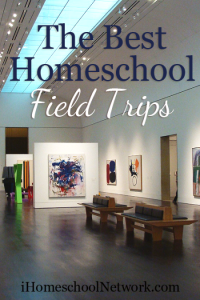 You can find an even more extensive list of Pennsylvania field trips here; the ones I’ve listed are just some highlights from our experiences.
You can find an even more extensive list of Pennsylvania field trips here; the ones I’ve listed are just some highlights from our experiences.
This post is also part of the iHomeschool Network’s Best Homeschool Field Trips linkup. Click the image at right to read more!
Even more great resources
First of all, if YOU have books, websites, field trip ideas or other resources on homeschooling in Pennsylvania, please leave me a comment below! I’ll keep updating this guide with as many great resources as possible.
Some assorted other notes:
- Did you know that, IF you want to use it, your school district must provide you with a copy of all texts and instructional materials your child would use in public school? Most homeschooling parents I know don’t want to use the public school’s curriculum, but if you want it in full or part, it’s a great FREE way to get materials you might not otherwise be able to.
- School districts are generally required to allow Pennsylvania homeschoolers to participate in extracurricular activities like sports as well. You can read more about extracurriculars and homeschoolers on the Pa. Dept. of Education website here.
- In Dillsburg, here in central Pennsylvania, the Pennsylvania Curriculum Exchange is a large store offering new and used curriculum for homeschoolers.
- There are more local homeschool support groups than I could list here and try to cover the whole state. I highly encourage you to search online for your county’s name and “homeschooling,” and also, check out Facebook. I LOVE my York County homeschoolers Facebook groups!
- One of my favorite fellow Pennsylvania homeschool bloggers is Judy of Contented at Home. After Ask Pauline, Judy is my top recommendation from today’s post! Specifically, if you want to learn about Pennsylvania, I highly recommend her Ultimate Guide to Famous Pennsylvanians and Ultimate Guide to Famous Pennsylvanians. These are AMAZING learning guides.
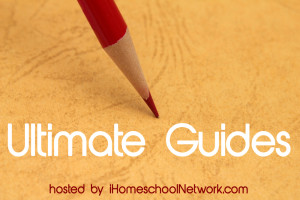 This post is part of the iHomeschool Network’s Ultimate Guides series.
This post is part of the iHomeschool Network’s Ultimate Guides series.
Click the image at right to see great tips from some of my fellow bloggers on everything from homeschooling gifted learners to field trips for homeschoolers to establishing a reading culture in your home!
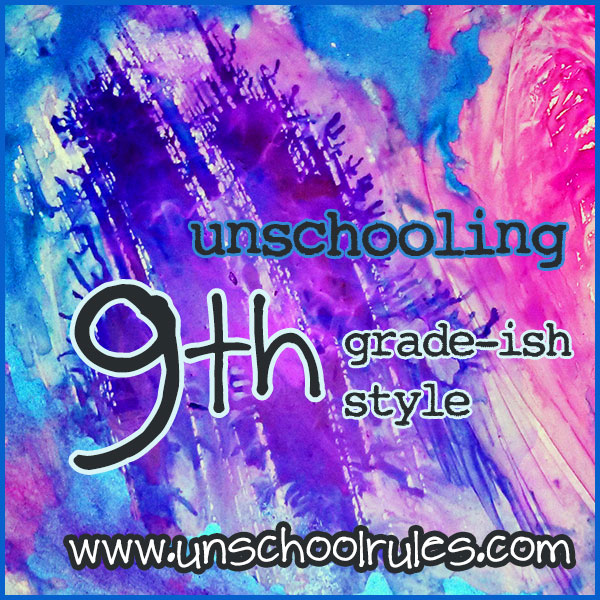
 For night owls like us, this time might start anywhere from 11 p.m. to 1 a.m. and go for a few hours!
For night owls like us, this time might start anywhere from 11 p.m. to 1 a.m. and go for a few hours!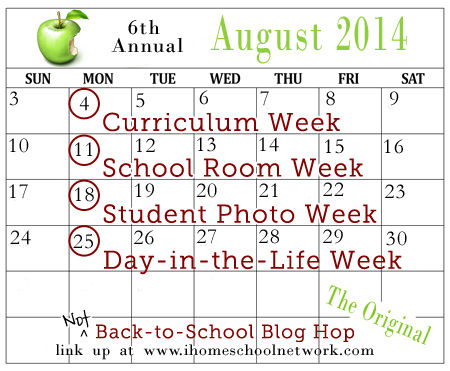 Want to see what my fellow iHomeschool Network bloggers are learning this year?
Want to see what my fellow iHomeschool Network bloggers are learning this year?
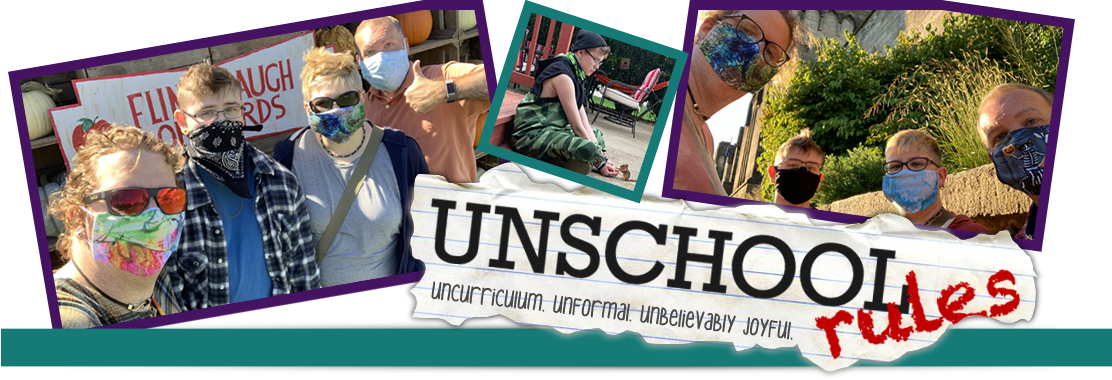
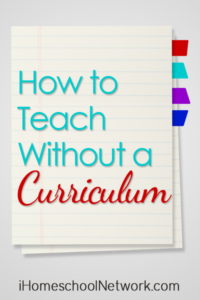
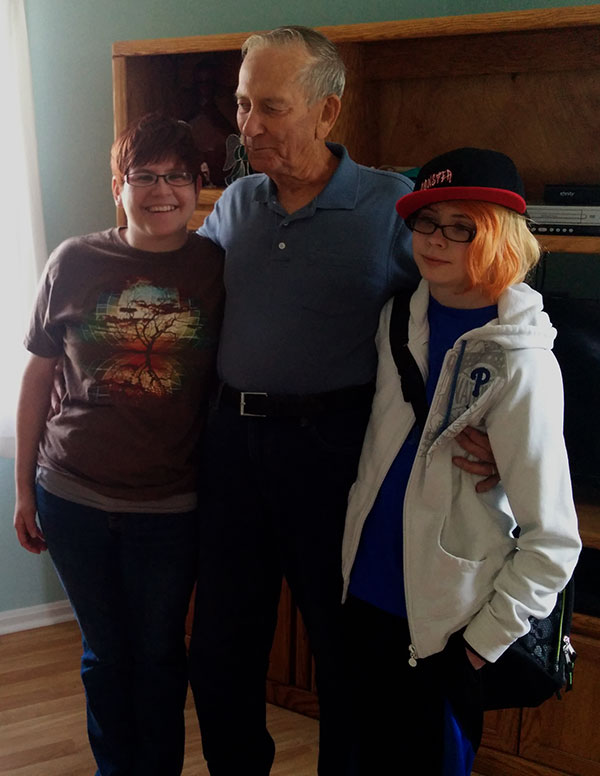
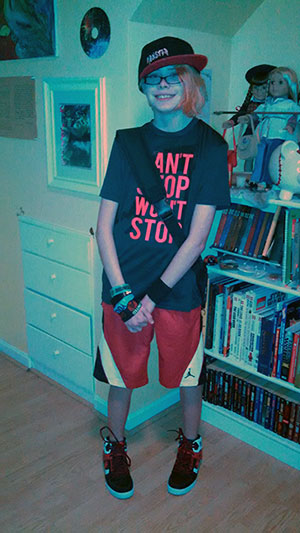
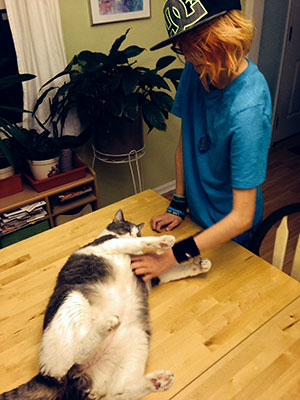
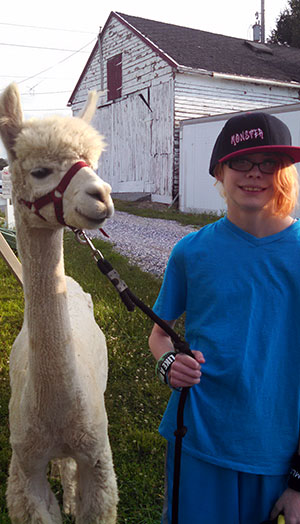
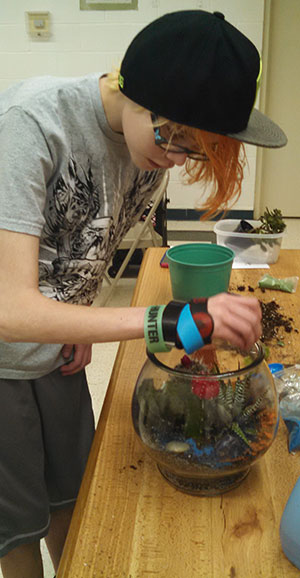
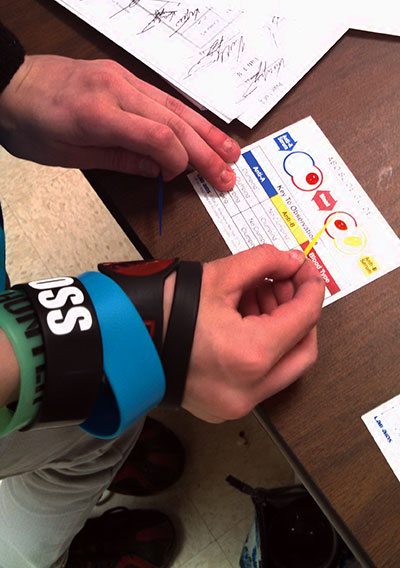
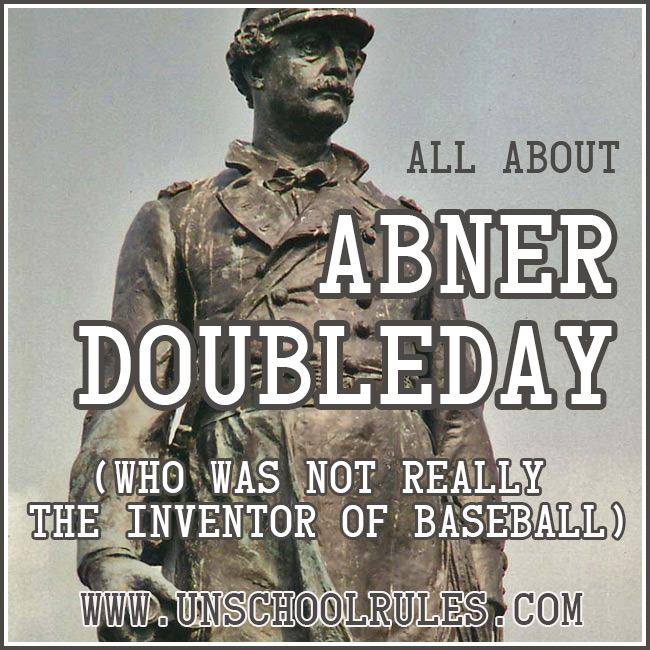







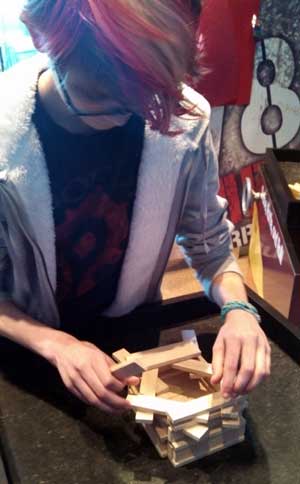 If you happen to be on the East Coast of the United States, I highly recommend a trip to the
If you happen to be on the East Coast of the United States, I highly recommend a trip to the 


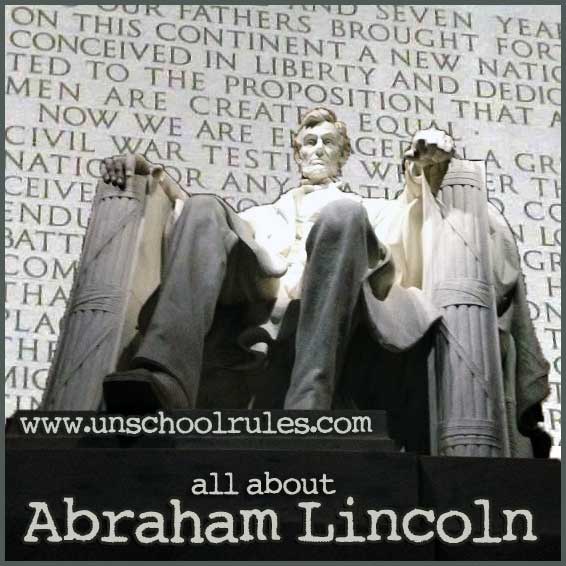
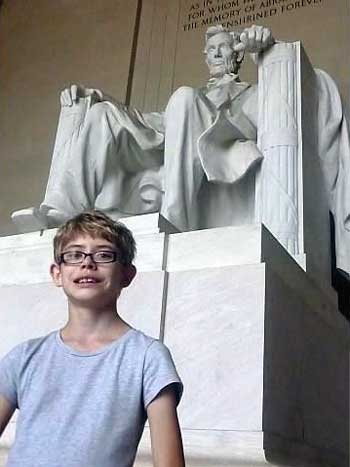 One of Lincoln’s most famous speeches, where he said, “A house divided against itself cannot stand,” actually came during one of his losing campaigns for the Senate in 1858. Despite that setback, Lincoln still won the presidential election in 1860. Southern states, concerned about his strong anti-slavery stance, decided to leave the Union after he was elected in November of 1860 but before he even took office. On March 4, 1861, Lincoln was sworn in as president. Barely a month later, on April 12, the nation was at war.
One of Lincoln’s most famous speeches, where he said, “A house divided against itself cannot stand,” actually came during one of his losing campaigns for the Senate in 1858. Despite that setback, Lincoln still won the presidential election in 1860. Southern states, concerned about his strong anti-slavery stance, decided to leave the Union after he was elected in November of 1860 but before he even took office. On March 4, 1861, Lincoln was sworn in as president. Barely a month later, on April 12, the nation was at war.
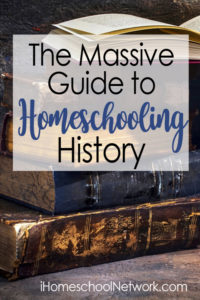
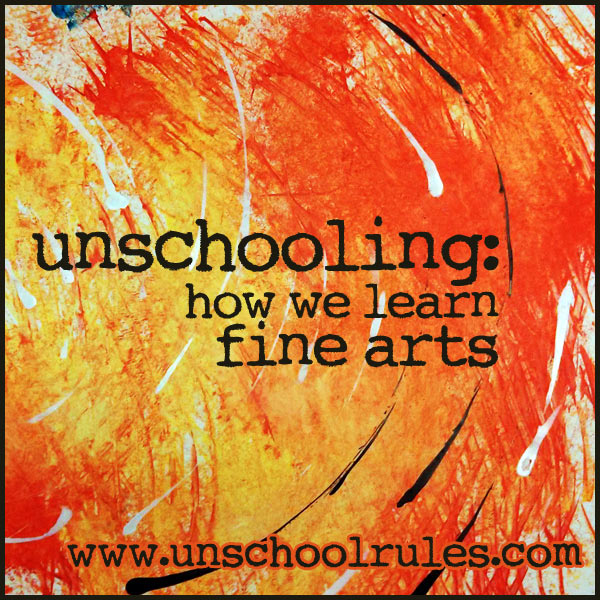
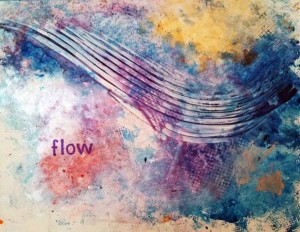 I realized as I was writing this post that I haven’t very often blogged about the ways we most often “do art” in our family. That’s funny, because it’s probably our single biggest family pastime, and one that I certainly owe a full post to soon!
I realized as I was writing this post that I haven’t very often blogged about the ways we most often “do art” in our family. That’s funny, because it’s probably our single biggest family pastime, and one that I certainly owe a full post to soon! Ashar and I often collage and scrapbook together.
Ashar and I often collage and scrapbook together. And this one is my favorite:
And this one is my favorite: 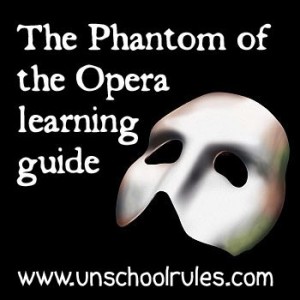
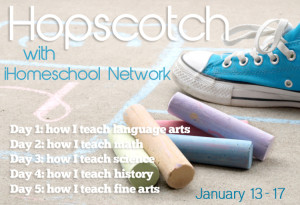
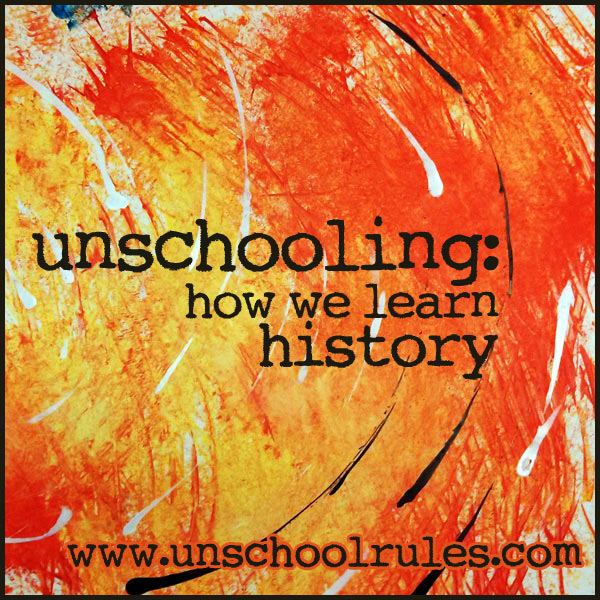
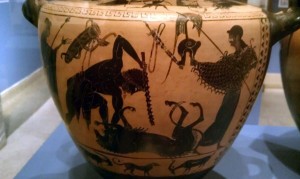 When we visit a place, we learn about the history associated with it. When we see a movie about a particular period, we’re often motivated to dig deeper into that time. When someone famous catches Ashar’s eye, we learn more about their place in the past (or present)! Even video games –
When we visit a place, we learn about the history associated with it. When we see a movie about a particular period, we’re often motivated to dig deeper into that time. When someone famous catches Ashar’s eye, we learn more about their place in the past (or present)! Even video games – 